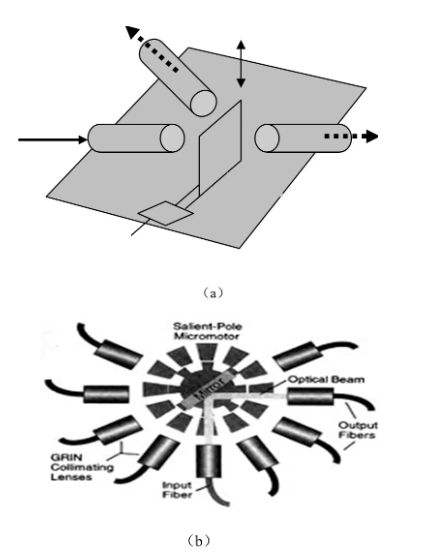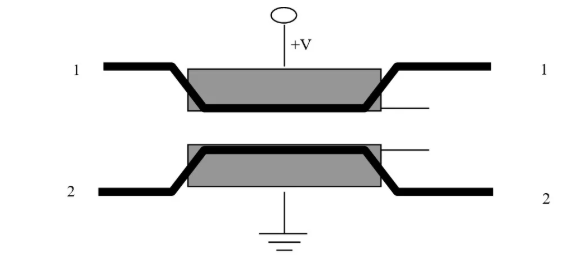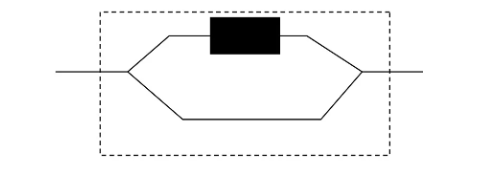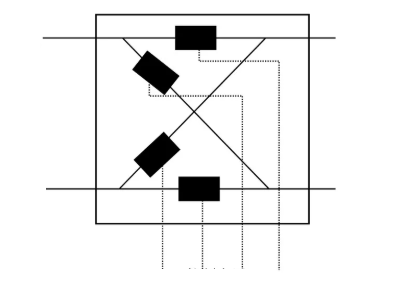In optical fiber communication system, some optical devices without power supply are needed, which are collectively referred to as passive optical devices, such as optical fiber connectors, optical fiber couplers, optical attenuators, optical isolators and optical switches. The characteristics of passive optical devices without power supply not only bring many convenience to construction and maintenance, but also greatly reduce the cost of network construction. Therefore, the passivity of optical communication devices represents the development direction of optical communication devices. This paper mainly introduces the working principle and technical specifications of various optical attenuators
1. Working principle and classification
There are many performance parameters of optical switch, such as fast switching speed, high isolation, small insertion loss, insensitive to polarization and reliability. The requirements for it in different fields are also different. Its types include traditional optical mechanical switches commonly used in protection and switching systems, as well as new optical switches developed rapidly in recent years, such as thermooptical switches, liquid crystal switches, electro-optical switches, acousto-optical switches, MOEMS Micro Optical Electro Mechanical Systems bubble switches, etc. In the field of ultra-high speed optical communication, there are also optical switches such as Maeh Zehnder interference optical switch and NOLM nonlinear optical fiber loop mirror optical switch.
MEMS mechanical optical switch
The working principle of traditional mechanical optical switch: through thermal, electrostatic and other power, rotate the micro mirror to send or reflect the light directly to the output. It is characterized by slow switching speed and good cost performance. It has market prospects in many fields, but the disadvantages of large volume and difficult large-scale integration limit its application in the field of optical communication in the future. On this basis, the optical switch has developed rapidly in recent years. It is a new switch combining MEMS and traditional optical technology. In particular, it has the advantages of transparent data format of optical signal, independent of polarization, small difference loss, fast speed and easy integration. Figure (a) gives the principle of a MEMS switch, and (b) gives the corresponding example.

Electrooptical switch
Electro optic switch, 2 × 2, but not by changing the length of the optical fiber, but by changing the refractive index of the coupling region material. Lithium niobate (LiNbO3), a commonly used material, has fast switching speed and easy integration. Its structure is shown in the figure.

Thermo-Optic Switch
Thermo optic switch, 2 × The thermo optical switch of 2 is an MZI interferometer. By changing the refractive index of one arm (affected by temperature), the phase difference between the optical signals on the two arms is changed, so that the optical signal is on and off between the input / output terminals. MZI can be integrated on silicon or polymer substrates, but the switching speed and crosstalk performance are not very good. Its structure is shown in the figure.

SOA optical switch
SOA optical switch uses semiconductor optical amplifier to realize the switching function by changing the bias voltage of SOA. When the bias decreases, there is no inversion of particle number, so it absorbs the optical signal. When the bias increases, it amplifies the input signal. Therefore, when SOA is in the absorption and amplification state, it has large on-off extinction ratio, easy integration, fast switching speed, but polarization sensitive. As shown in the figure, an SOA switch array is given.


1. Technical specifications
Optical switch is the key device of optical switching. It has many applications in optical network. The switching speed or switching time of optical switch is an important performance index. The requirements for switching time are different in different applications. For example, the switching time of optical channel is 1 ~ 10ms, and the switching time of protection switching is 1 ~ 10 μ s. The switching time of packet switching is 1ns, and the switching time of external modulator is 10ps. In addition to the switching time, there are some parameters to measure the performance of optical switch.
(1) On off extinction ratio. It refers to the ratio of the output optical power when the optical switch is in the on (on) state to the output optical power when it is in the off (off) state. The larger the on-off extinction ratio, the better the performance of the optical switch, which is particularly important for the external modulator. The on-off extinction ratio of the mechanical switch is about 40 ~ 50dB.
(2) Insertion loss (referred to as insertion loss) refers to the energy loss on the optical path caused by the use of optical switches, which is often expressed in dB. The smaller the better. When the switches are in different input / output connection states, the insertion loss may be inconsistent, that is, the consistency of insertion loss is poor, which is undesirable for practical applications.
(3) Crosstalk refers to the power of an output port not only from the desired input port, but also from the unwanted input port. The ratio of the two optical powers is called crosstalk.
(4) Polarization dependent loss. Loss of optical power due to polarization.
The comparison of technical parameters of several main optical switches is given in the table.

With a professional sales team and R & D team,Sharetop is a national recognized high-tech enterprise with more than 20 corporate honors such as patents, trademarks and software copyrights. The main products cover optical communication active and passive products, including 5g base station products, OTN equipment, optical modules (1.25g/10g/25g/40g/100g/200g), wavelength division multiplexers, optical switches, transmission integrated platforms, optical fiber amplifiers, line protection equipment, dispersion compensators, optical fiber transceivers, etc.

隐私保护 |
法律声明 |
在线留言 |
网站导航 |
网站地图 |
文档下载 | 咨询热线:0755-27524036 |
订阅
深圳纤亿通科技有限公司版权所有 转载必究 Copyright 2010-2019 poptimes CO.,Ltd. All rights reserved.
备案号:粤ICP备14020946号
友情链接: 光创未来| fiber168| 纤亿通光源放大器网站| 纤亿通光模块网站| 纤亿通保偏无源器件网站| 纤亿通OTN网站

